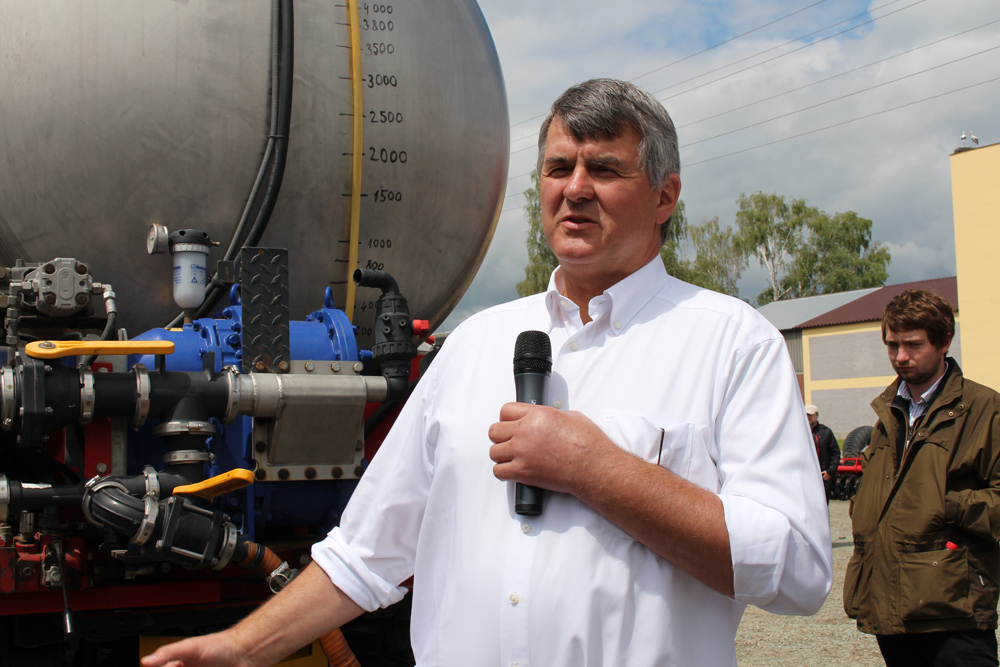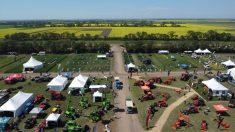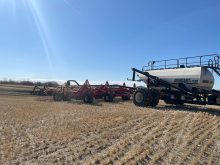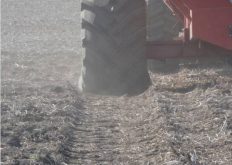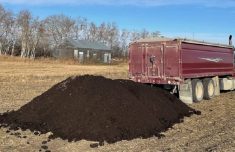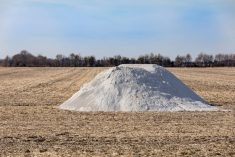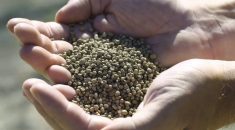More than 130 farmers, consultants and industry professionals visited Horsch’s 3,200 hectares Agrovation farm in the Czech Republic, as part of the second International CTF Conference, organized by CTF Europe and supported by Horsch, Trimble and Claas.
Machinery manufacturer and farmer Michael Horsch has been an advocate of controlled traffic farming (CTF) for several years and so it provided the perfect opportunity to showcase how he and his brother Phillip have adopted it on the 7,900-acre farm the company bought three years ago.
“We had never seen land or soil structure so run down before,” explained Michael Horsch to visitors. “But because we had the luxury of starting from scratch, it seemed the perfect opportunity to adopt CTF.”
Read Also
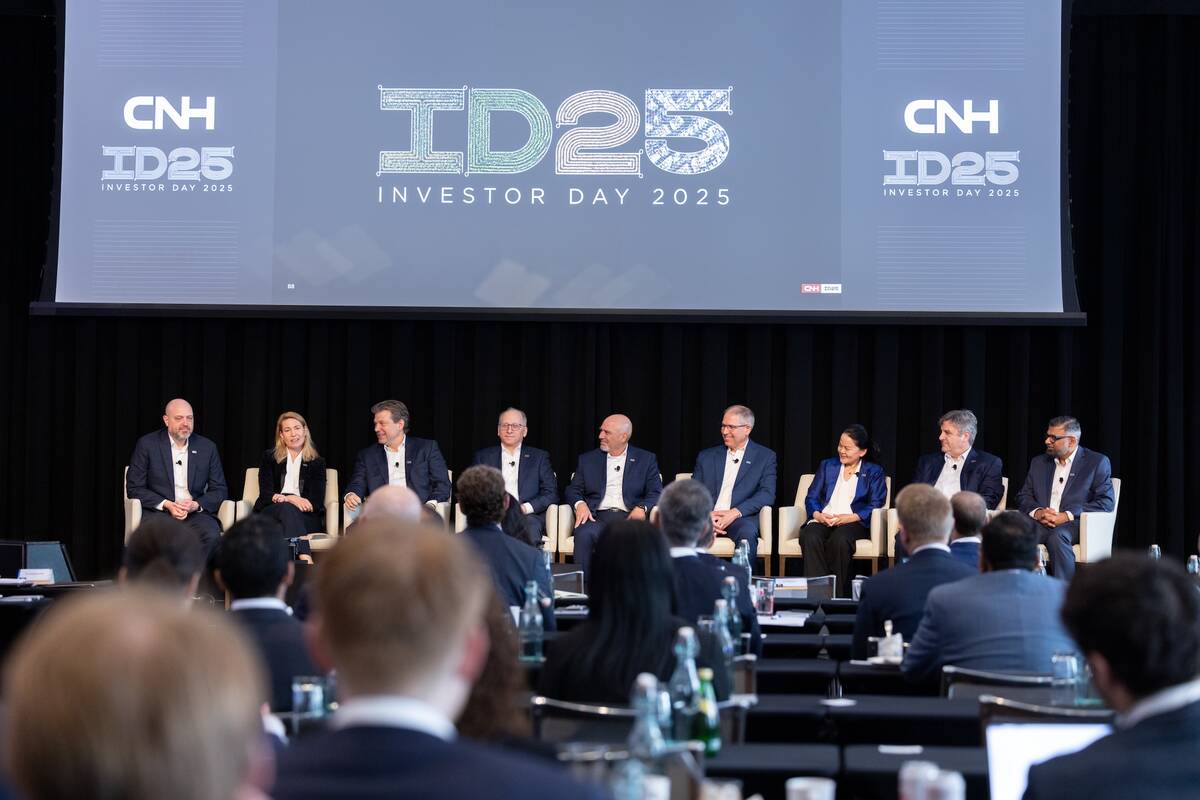
Case IH, New Holland dealers to see more integration
CNH plans for “more than 15 new tractor launches, 10 combine launches, 19 crop production launches and over 30 precision technology releases between now and the end of 2027.”
Each machine is on three metre wheel threes, a decision partly dictated by the track width of the combine. This has meant adapting tractors and machinery to fit. “We have the benefit of having the expertise and facilities to carry out the modifications, but in many cases it hasn’t been that difficult.”
Cultivating and drilling are done at 12 metres with a Horsch Joker and Pronto disc drill. Spraying is at 36 metres, with a Leeb PT330.
“First and foremost, my brother and I are farmers, then machinery manufacturers. We are using the Agrovation farm to develop products, and if there is a market for them then we will take them to production.
“Everything we can we put on tracks,” added Horsch. In fact, nearly all machines are tracked, even the fertilizer spinner is mounted on a tracked unit, set at three metres.
“Although we are not long into the process, there are several observations that are already clear. The first is that we are getting more done with less machinery. In fact, going CTF has meant we need less machinery and not more.”
- More Grainews: Controlling your farm traffic
The second is the quality of the work done. “Because we can control what’s being done more, it has resulted in a uniformity that wouldn’t have been possible without it.”
“When we took over the farm we had a workforce of 77. It was a traditional unwieldy soviet-based system and it took us a week alone to track down all the parcels of land. Now, we only have a workforce of five, and that includes the labour on the dairy part of the enterprise.”
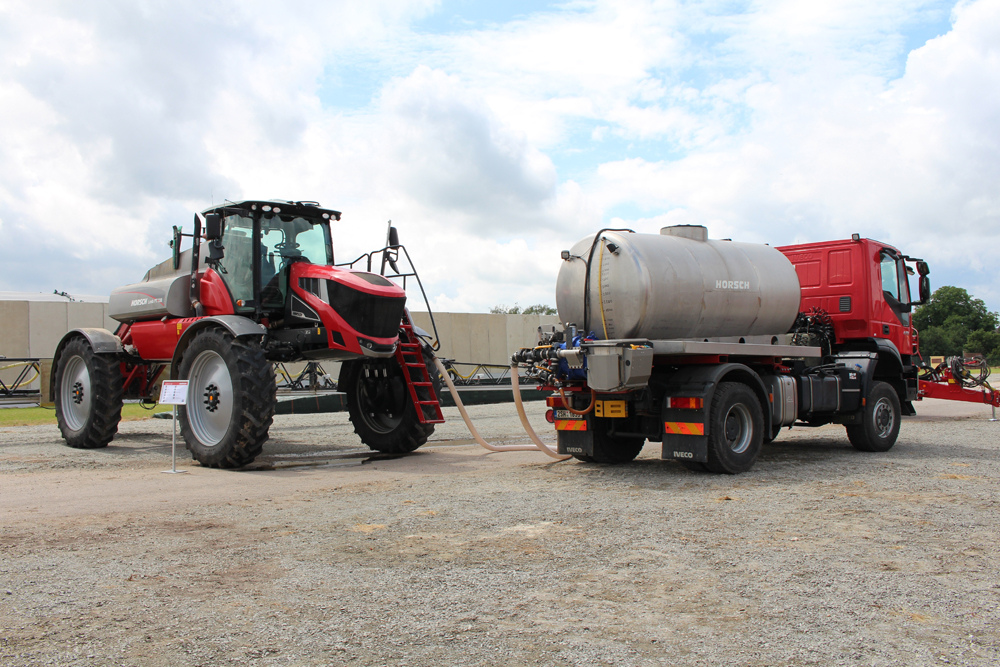
The logistical benefits of CTF are considerable, he added. “But you have to be prepared to plan things more carefully. We now have a dedicated bowser for the sprayer that takes out tank mixes at a time, meaning we can manage work rates of up to 600 ha/day,” (1,482 acres).
A software programme lets you plan tramlines and also helps with field obstacles such as pylons and trees. “In one case, we’ve managed to reduce spraying time in one such field by 45 minutes, just by planning tramlines.”
Now, less than 10 per cent of each field is travelled upon, compared to as much as 80 per cent with usual traffic.
“You only really understand CTF when you are doing it,” Michael added. “But we expect that long term, it will mean less deep tillage, better soil quality, more traceability and less chemical and fertilizer use. We don’t know about yields yet as it hasn’t been in place long enough.”

